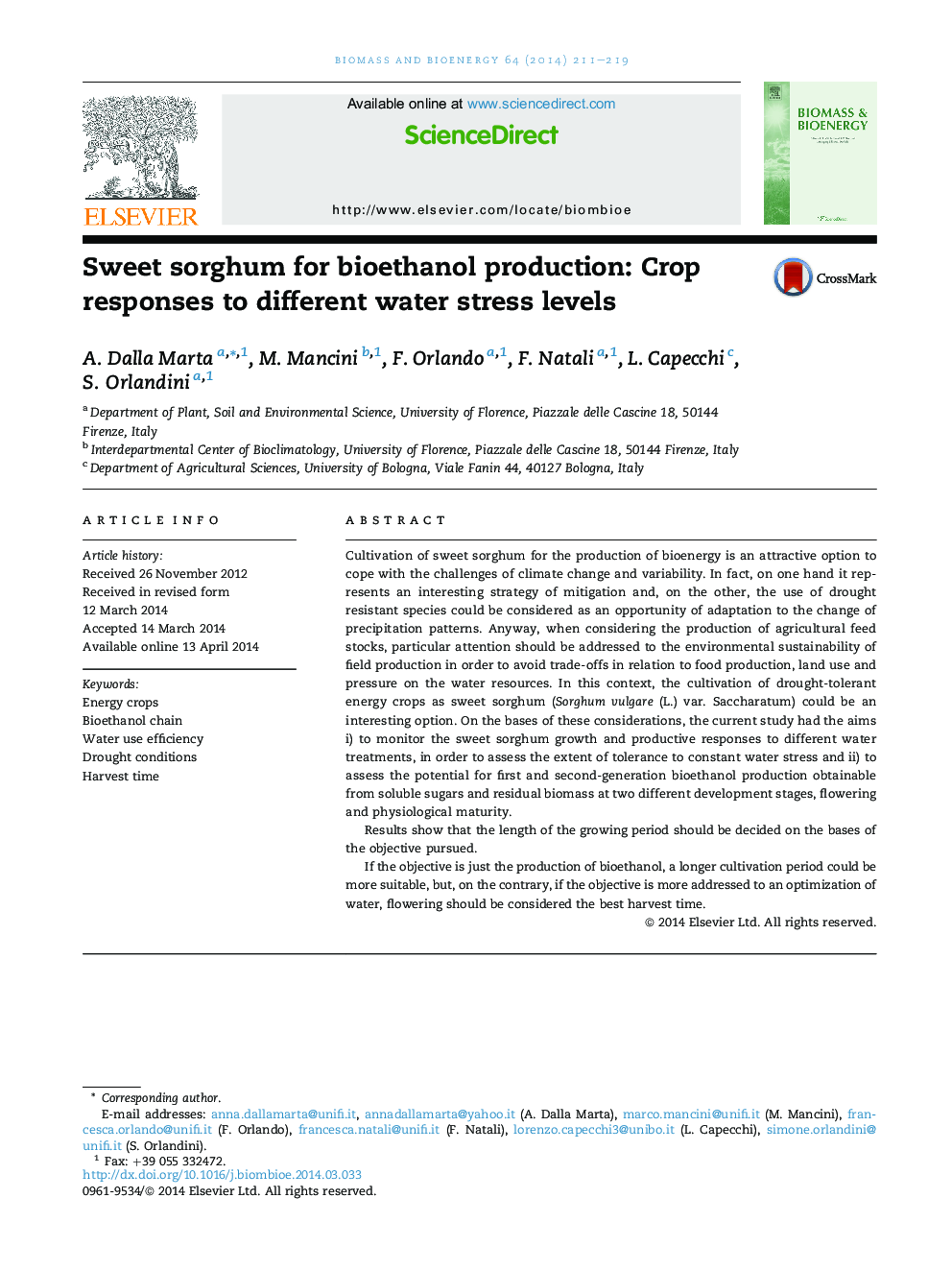| کد مقاله | کد نشریه | سال انتشار | مقاله انگلیسی | نسخه تمام متن |
|---|---|---|---|---|
| 676888 | 1459829 | 2014 | 9 صفحه PDF | دانلود رایگان |
• We examine water use efficiency of sorghum under different level of water stress.
• We analyze the effect of water and harvest date on biomass, sugar and bioethanol production.
• Sorghum, in terms of water use efficiency, take advantage from larger availability of water.
• Later harvest time is not indicated for a sustainable management of water resource.
Cultivation of sweet sorghum for the production of bioenergy is an attractive option to cope with the challenges of climate change and variability. In fact, on one hand it represents an interesting strategy of mitigation and, on the other, the use of drought resistant species could be considered as an opportunity of adaptation to the change of precipitation patterns. Anyway, when considering the production of agricultural feed stocks, particular attention should be addressed to the environmental sustainability of field production in order to avoid trade-offs in relation to food production, land use and pressure on the water resources. In this context, the cultivation of drought-tolerant energy crops as sweet sorghum (Sorghum vulgare (L.) var. Saccharatum) could be an interesting option. On the bases of these considerations, the current study had the aims i) to monitor the sweet sorghum growth and productive responses to different water treatments, in order to assess the extent of tolerance to constant water stress and ii) to assess the potential for first and second-generation bioethanol production obtainable from soluble sugars and residual biomass at two different development stages, flowering and physiological maturity.Results show that the length of the growing period should be decided on the bases of the objective pursued.If the objective is just the production of bioethanol, a longer cultivation period could be more suitable, but, on the contrary, if the objective is more addressed to an optimization of water, flowering should be considered the best harvest time.
Journal: Biomass and Bioenergy - Volume 64, May 2014, Pages 211–219
